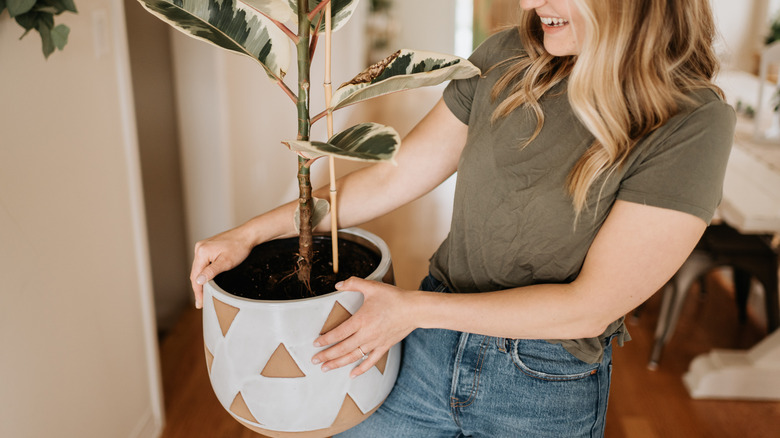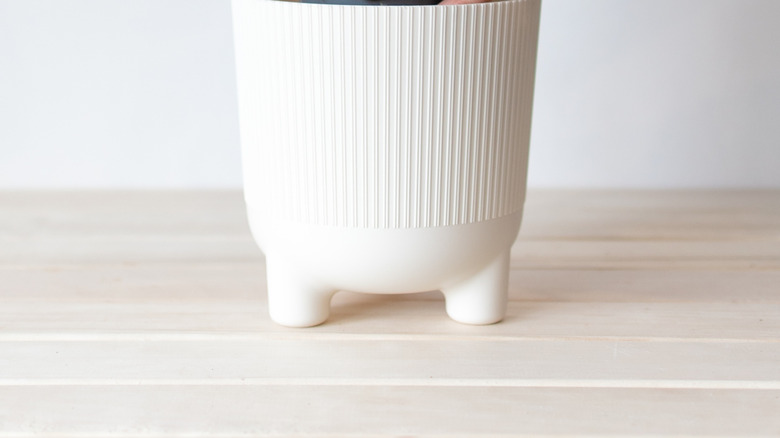One Clever Hack Saves You From Buying A New Planter For Your Large Plant
You have finally done it. After walking the aisles of the garden store for hours and learning the best tips for choosing the right container for your indoor plants, you found the perfect pot for your home. It is beautiful, a good price, and looks about the right size. So, you make the purchase and bring your ideal new piece of décor home. Once there, you grab the plastic nursery pot containing your gorgeous houseplant to slide it into the new pot, but it simply will not fit. Even if the pot seems large enough, differences in shape between a nursery pot and new planter can crush your houseplant dreams. Luckily, there is an incredibly easy hack that saves you from buying a new planter for your large plant.
For this hack, all you need is a pair of scissors. Take the plastic containing your houseplant and create two vertical cuts across from each other at the top of the nursery pot. Be careful to avoid the plant's leaves and roots as you make the cuts. This will allow the plastic top rim to be more malleable, bending to fit into the opening of your new pot. Making deeper cuts will give the plastic pot more room to condense if needed. This hack is a great way to make a nursery pot fit inside a beautiful planter, but you might face some difficulties the next time you remove the plastic from the pot. To prevent messes in the future, there are some additional ideas to consider that will improve this hack.
How to make this hack work without making a mess
If you are worried about the dirt getting everywhere from this hack, there are a few things you can do. First, since you are shrinking the space that the plant has, remove some soil from the top before making the cuts. This will prevent soil from being squeezed up and out of the plastic pot as it is condensed. Also, to avoid soil spilling around by accident when you remove the pot, it might be worth applying some tape where you made the cuts. The tape will secure the two parts of the cut in an overlapping position to keep the pot at the smaller size while plugging any openings that might occur from warping the plastic.
If you have found yourself one of the trendiest indoor planters and the size difference is minimal, then this is a perfect hack for you. However, this would also be a good time to check for signs a plant needs to be repotted — such as little new growth, tipping over, drying out between waterings, or crust on the soil's surface — and repot if needed. If you are avoiding repotting because it seems too daunting, then learning some tips for easily repotting your favorite plants may be a good decision.

